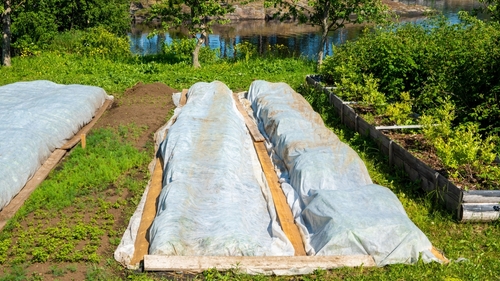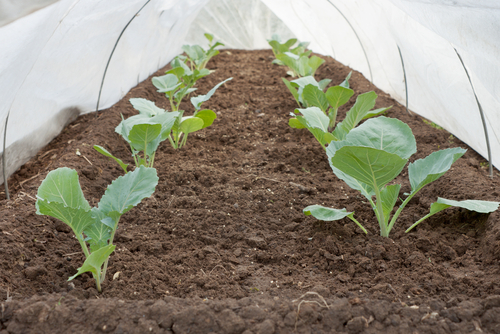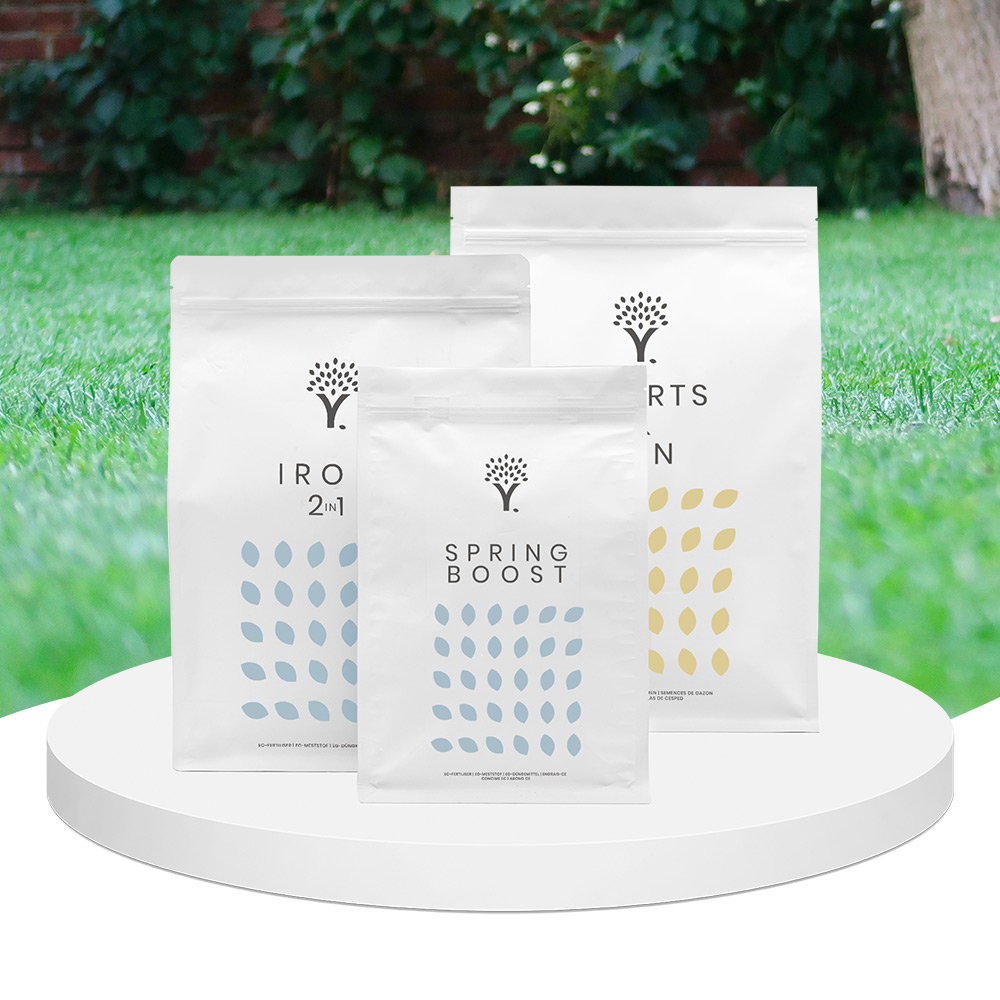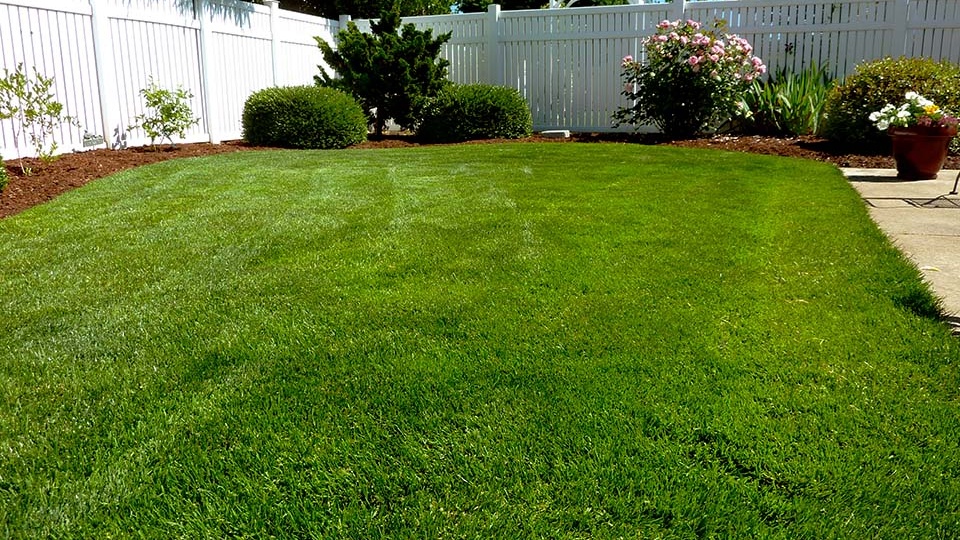Log in or create new account to save this product to your wishlist.
6 Winter Gardening Tips to Keep Your Garden Thriving this Winter
Winter can still be beautiful! Check out our 6 expert tips to help maintain an attractive, thriving winter garden that springs back to life in the new year.
Latest blogposts
7 MIN 22 Jul How to keep your lawn in shape this summer 9 MIN 15 Jul Watering Your Garden: 10 Top Tips! 11 MIN 15 Jul Is Your Grass Type Right for your Garden? 4 MIN 03 Sep Gardening in September — jobs to do 7 MIN 23 Aug How to Encourage Bees in Your Garden 5 MIN 14 Aug Pruning Lavender: when, why and how?Winter can be a difficult time for gardeners, especially those with outdoor gardens. The cold temperatures and lack of sunlight can cause even the most resilient plants to give up. Check out our winter gardening tips to help keep your garden thriving while the temperatures drop.
Fortunately, there are some simple steps that you can take to make sure that your garden can thrive during the winter season.
In this article, I’ll discuss six of the most effective ways to keep your outdoor garden thriving during the winter so you can enjoy beautiful blooms and lush foliage all year round. From selecting the right plants to protecting your garden from the elements, these tips will help you keep your garden looking great and growing strong.
So, grab your gardening gloves, and let’s get started!
Winter gardening tips #1: The Right Plants for Winter Gardening
Before you even think about protecting your garden from the cold, you’ll need to select the right plants capable of surviving the winter weather.
Consider the following factors when choosing plants for your winter garden.
Climate
The first thing you’ll need to consider is the climate of your garden. Certain plants thrive in different climates, and some gardens have distinct ecosystems. For example, my garden is shaded on one side, so spring appears to arrive a couple of weeks later in my back garden than in my front garden.
So, if you are growing your garden in a climate that experiences cold winters, you’ll need to select plants that can withstand the cold temperatures.
However, the UK generally doesn’t get extremely cold – we rarely drop more than -5ºC. This gives us more options when selecting plants that can withstand the winter weather.
Light Needs
Along with the climate, you’ll also need to consider the daylight needs of the plants you plan to grow in your garden.
Plants that require full sun won’t grow during the winter months since there isn’t enough sunlight to sustain them.
So, choose winter-hardy plants, such as:
- Chimonanthus praecox
- Viburnum
- Holly
- Sarcococca
- Clematis
Additionally, heathers and exotic grasses are often winter-hardy. Check with your garden centre before your buy.
Water Needs
Select plants with the same watering needs as the other plants and shrubs currently growing in your garden.
Some plants require more water than others – and these are the ones that are more likely to die on you! So, choose plants with minimal watering needs; otherwise, adjust your watering schedule accordingly.
Winter gardening tips #2: Preparing Your Garden for Winter

While you’ll want to pick the right plants to withstand the cold weather, you must also prepare your garden for winter. This will help protect your plants from any potential damage caused by extreme cold, snow, and ice.
Protect your garden during the winter months by:
Mulching
Probably the best way to protect your garden plants from the cold is to mulch – adding a layer of (usually) organic material to the soil surface, such as wood chips, leaf mould, or mulching wool.
Mulching provides a barrier between the ground and the cold temperatures above it, preventing water from evaporating and keeping your soil from freezing.
Check out our expert guide to mulching.
Covering Plants
Another way you can protect your garden is by covering your plants. You can do this by using row covers or floating row covers.

A row cover is a layer of flexible, transparent material that sits on top of your plants – transparent so that light still gets to the plant for continued photosynthesis and flexible so you can mould it into a shape that protects the plant from the soil to the upper leaf tips.

A floating row cover is also known as a polytunnel – a tall hood that reaches over the top of the plants.
Row covers are typically made from horticultural fleece or thick, robust plastic sheeting. Polytunnels are usually plastic.
Row covers protect smaller plants, such as root veg, while you can use polytunnels to cover your larger plants.
Winter gardening tips #3: Protecting Your Garden from the Elements
As well as mulching and covering your plants, you may need to protect your garden from diseases and pests – especially if your selected plants aren’t suited to the cold.
Fortunately, there are several ways you can protect your garden from the harsh winter weather:
Drying Out Pockets of Wet Ground
As the temperatures drop, you may notice that wet ground pockets start forming in your garden. This is known as frost heaving, and it can cause damage to your plants.
Prevent frost heaving by scraping away the top layer of soil and removing any excess water.
Mulching Around Your Plants
As I mentioned, mulching helps protect your garden from the cold weather.
However:
You’ll may also need to mulch around your plants. This helps prevent your garden soil from freezing, because frost will inevitably creep underground towards your plants’ roots in winter. .
Wrapping Plants
Wrapping your plants is another excellent way to protect them from cold weather. You can wrap certain plants with burlap, fleece fabric, or even old sheets. You can also cover larger plants with straw or hay.
Wrapping plants like this can help prevent them from being damaged by the cold weather while insulating them from low temperatures.
Winter gardening tips #4: Creating a Winter Garden Maintenance Schedule

Now that you’ve selected the right plants for your garden and prepared it for winter, you’ll also need to create a maintenance schedule for your winter garden.
This will help keep your plants healthy and thriving during the winter months. Follow these steps:
Check the Soil
Check your garden soil to ensure it isn’t too wet or dry at least once a week, especially when the weather has been particularly cold and wet.
Water Plants as Needed
It might be cold, but that doesn’t always equate with wetness, so water your plants as needed.
Of course, you should avoid watering before frost, which can damage the plants’ roots. It’s generally OK to water AFTER frost, which could help bring the soil temperature down, but don’t water if more frost is forecast.
Prevent Pests
Although pests tend to become less active in the winter, many maintain their feeding and reproductive schedules throughout the frigid, frosty months.
This can be especially important with cold-intolerant plants, which become more susceptible to pests when the cold weather compromises them.
Take measures to avoid:
- Grubs, such as chafer grubs
- Ants
- Spiders
Check out our articles about preventing lawn pests for expert tips on tackling the problem.
Winter gardening tips #5: Grow Winter Crops in Your Garden

Winter crops are cold-weather vegetables that can be grown in most temperate regions, such as the UK. They’re typically planted during the autumn and harvested during the winter months.
Winter crops make your typically dull winter garden look thriving and healthy.
These include vegetables such as
- Cabbage
- Brussel sprouts
- Kale
- Lettuce
- Leek
You can also grow winter flowers, like pansies and roses.
One of the best things about growing winter crops in your garden is that they require very little maintenance, which is essential during the winter months when you have less time to maintain your garden.
You’ll want to do a few things, though, to ensure that your winter crops are thriving during the winter months:
Prepare the Soil
Prepare the soil in your garden for winter crops by tilling the soil and adding fertilizer, like compost or manure. Add a general garden fertilizer and a soil improver, such as leaf mould or homemade compost.
Protect Your Plants
Even winter crops can get cold! So, protect your winter crops from the cold weather by covering them with burlap, row covers, or a polytunnel.
Winter gardening tips #6: Prune your plants

Winter is the best time to prune your deciduous plants while they’re dormant. They’re less likely to attract insects or transmit diseases during their winter slumber, so get those pruning sheers out.
Wait for a sunny day and trim overgrown bushes, shrubs, and trees into a more aesthetically pleasing shape. Most plants look a little bare and sorry for themselves immediately after pruning, but they’ll spring back to life more healthy and happy when the weather warms up in spring.
Any questions?
Now that you know how to keep your garden thriving during the winter months, you can enjoy lush foliage and beautiful blooms all year round.
If you have any questions, don’t hesitate to get in touch!
Thanks for reading!
Leave a comment
Your answer will be displayed on the site and the interested party will be notified by email.
Leave a comment
Have a question or want to share your experience? Leave us a comment.
Read more
The best tips and tricks for a lush green lawn
 4 MIN
03 Sep
Gardening in September — jobs to do
4 MIN
03 Sep
Gardening in September — jobs to do
 7 MIN
23 Aug
How to Encourage Bees in Your Garden
7 MIN
23 Aug
How to Encourage Bees in Your Garden
 5 MIN
09 Aug
4 Tips for more Ergonomic Gardening!
5 MIN
09 Aug
4 Tips for more Ergonomic Gardening!
 Scarifying Kit
All products after scarifying | Quickly restores the lawn after scarifying | Outsmart weeds quickly with the use of this kit
From: € 39.99
Scarifying Kit
All products after scarifying | Quickly restores the lawn after scarifying | Outsmart weeds quickly with the use of this kit
From: € 39.99
 Spring Lawn Care Kit
MOOWY’s choice for the spring | Quick recovery of your lawn after winter | A strong lawn prevents weeds
From: € 25.99
Spring Lawn Care Kit
MOOWY’s choice for the spring | Quick recovery of your lawn after winter | A strong lawn prevents weeds
From: € 25.99
 Long Lasting Lawn Fertiliser
Effective for 90 days | See results in 14 days! | Suitable for all types of grass and soil
From: € 13.99
Long Lasting Lawn Fertiliser
Effective for 90 days | See results in 14 days! | Suitable for all types of grass and soil
From: € 13.99
Do you want a lawn calendar?
🌱 All important maintenance moments for your lawn during the year. Leave your email and we will send you the lawn calendar for free.
Enter your email
Receive the lawn calendar in the mail
Enjoy a green lawn all year round!









Comments (0)
There are no comments yet. Well then, what are you waiting for to
Be the first to write your comment!inaugurate this pretty page?
Do you have some comments?